Exotic flowers have a way of captivating people with their vibrant colors and unusual shapes. Some species are not confined to one region but bloom across multiple climates and continents. Their ability to adapt and thrive in different environments makes them even more fascinating. Each flower brings a unique beauty and history, reflecting the diversity of the regions they grow in.
Bird of Paradise (Strelitzia reginae)
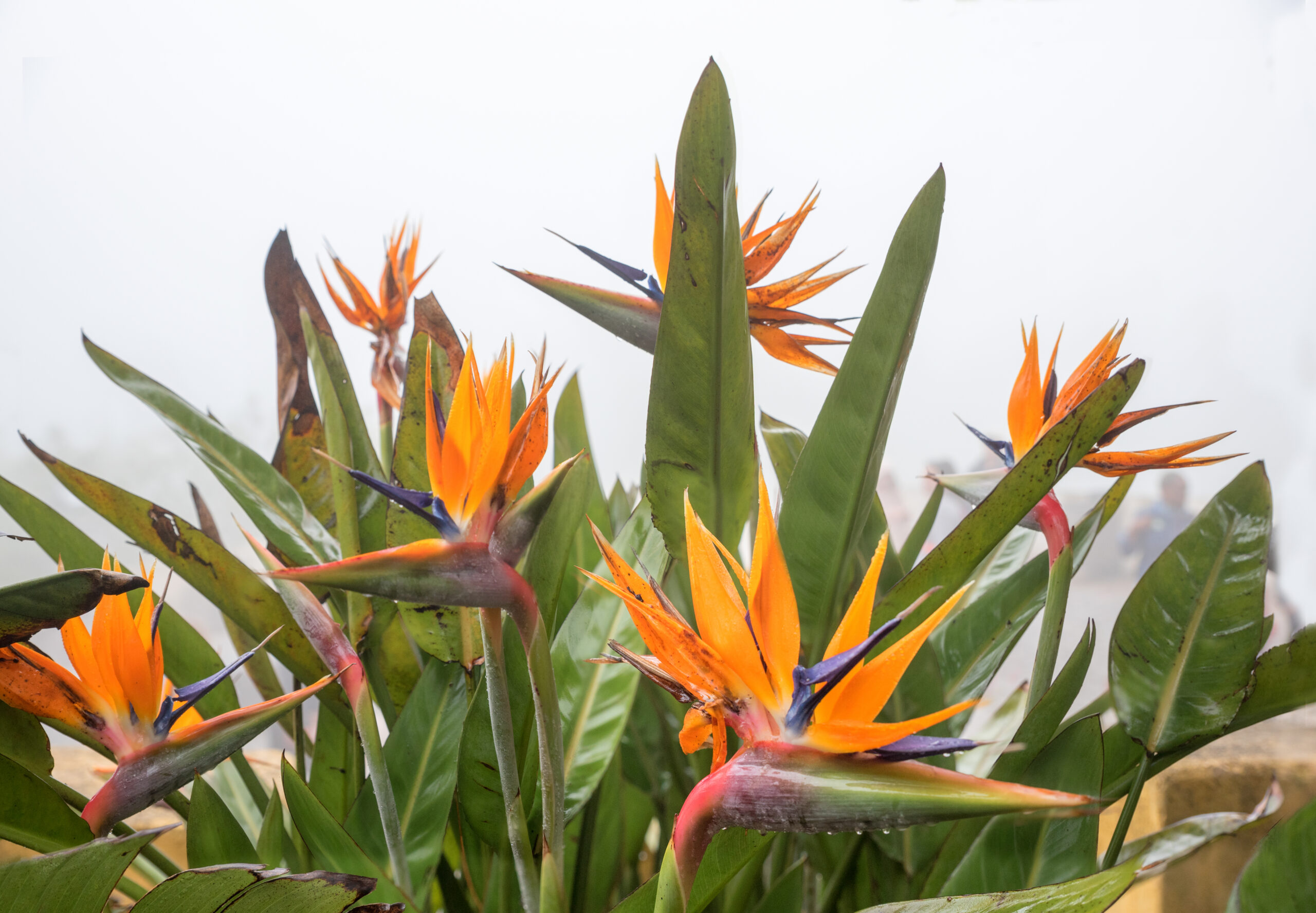
The Bird of Paradise is a tropical flower known for its bright, bird-like appearance. Native to South Africa, it is also widely cultivated in warm climates around the world. The flower’s vivid orange and blue petals resemble a bird in flight. It blooms throughout the year, especially in spring and summer. This plant thrives in sunny, humid environments, making it popular in gardens across different continents. Its striking look makes it a favorite for ornamental gardening. Bird of Paradise is both hardy and visually stunning, perfect for brightening any landscape.
Passionflower (Passiflora spp.)

Passionflowers are known for their intricate, exotic blooms. They grow in tropical and subtropical regions but can also adapt to temperate climates. The flowers display a beautiful mix of colors like purple, white, and blue. Their unique structure features petals, sepals, and a crown-like corona. These flowers are often used in herbal remedies due to their calming properties. Passionflowers attract pollinators like bees and butterflies, making them essential for healthy ecosystems. They grow on vines and thrive in a range of soil types and climates, adding vibrancy to any garden.
Queen of the Night (Epiphyllum oxypetalum)
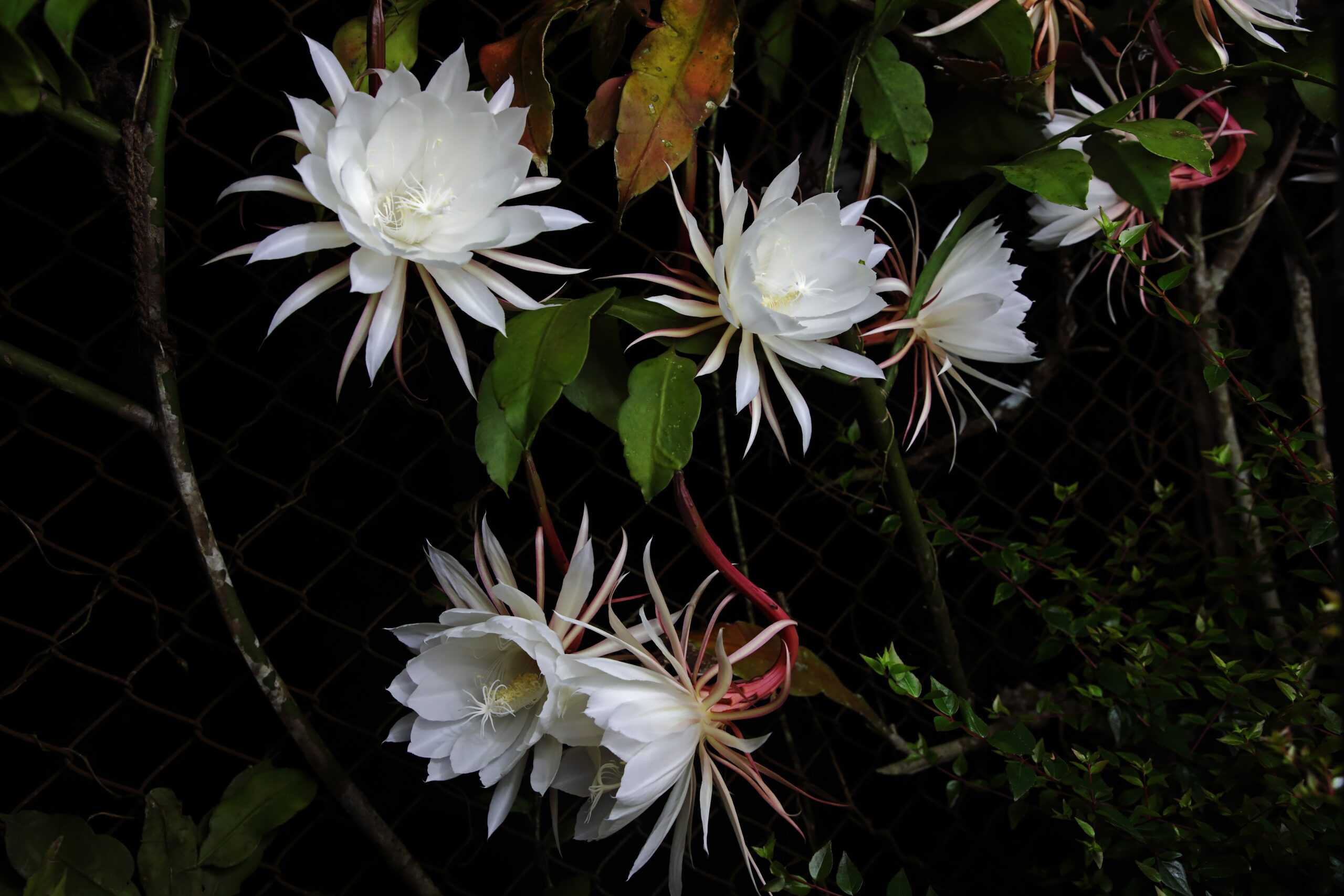
The Queen of the Night is a rare cactus flower that blooms only at night. It is native to tropical rainforests in Central and South America but can be grown in other warm regions. The flower’s large, white blooms release a strong, sweet fragrance that fills the night air. Blooming occurs only once a year, making it a highly anticipated event. This flower thrives in shaded, humid environments, often in containers or hanging baskets. Its fleeting beauty is a symbol of patience and appreciation of nature’s delicate timing.
Lotus (Nelumbo nucifera)
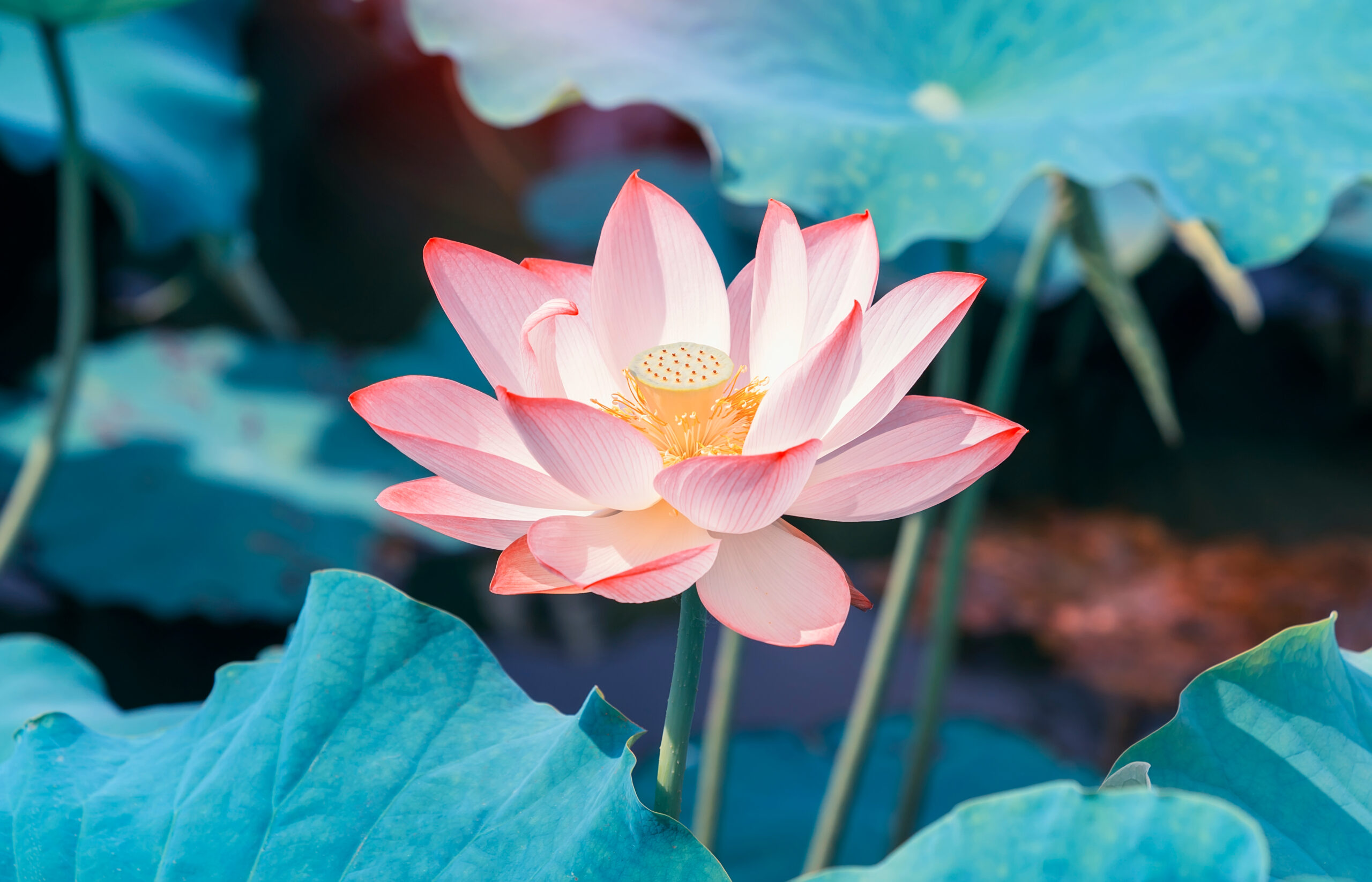
The Lotus is a sacred flower known for its beauty and symbolism. Found in Asia, Africa, and Australia, it thrives in freshwater lakes and ponds. The flower rises above murky waters, symbolizing purity and resilience. It blooms during warm months, with large pink or white petals surrounding a distinct yellow center. Lotus plants have deep cultural significance in many Asian traditions. Their ability to grow in various water conditions makes them widely appreciated. This exotic flower represents spiritual awakening and the beauty of life’s challenges.
Protea (Protea spp.)
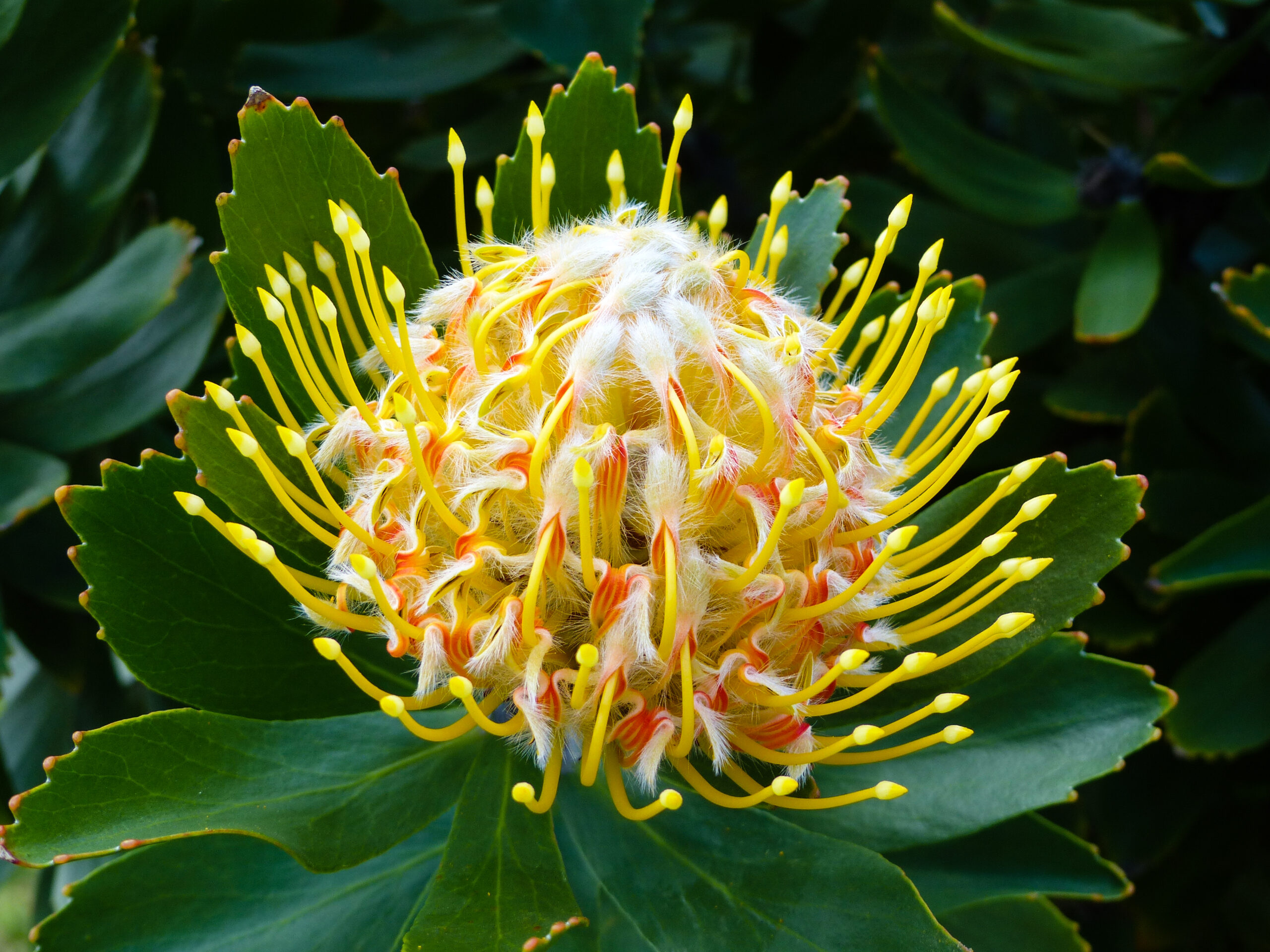
Proteas are ancient flowers with a variety of unique shapes and colors. They are native to South Africa but have adapted to regions in Australia and parts of South America. Their thick, spiky petals form a cone-shaped flower head, often in shades of pink, red, or yellow. Proteas are highly drought-resistant, thriving in well-drained soils. They are a popular choice for floral arrangements due to their bold structure. These flowers represent diversity and courage, as they have survived since prehistoric times. Their tough, adaptable nature allows them to bloom in various climates.
Torch Ginger (Etlingera elatior)
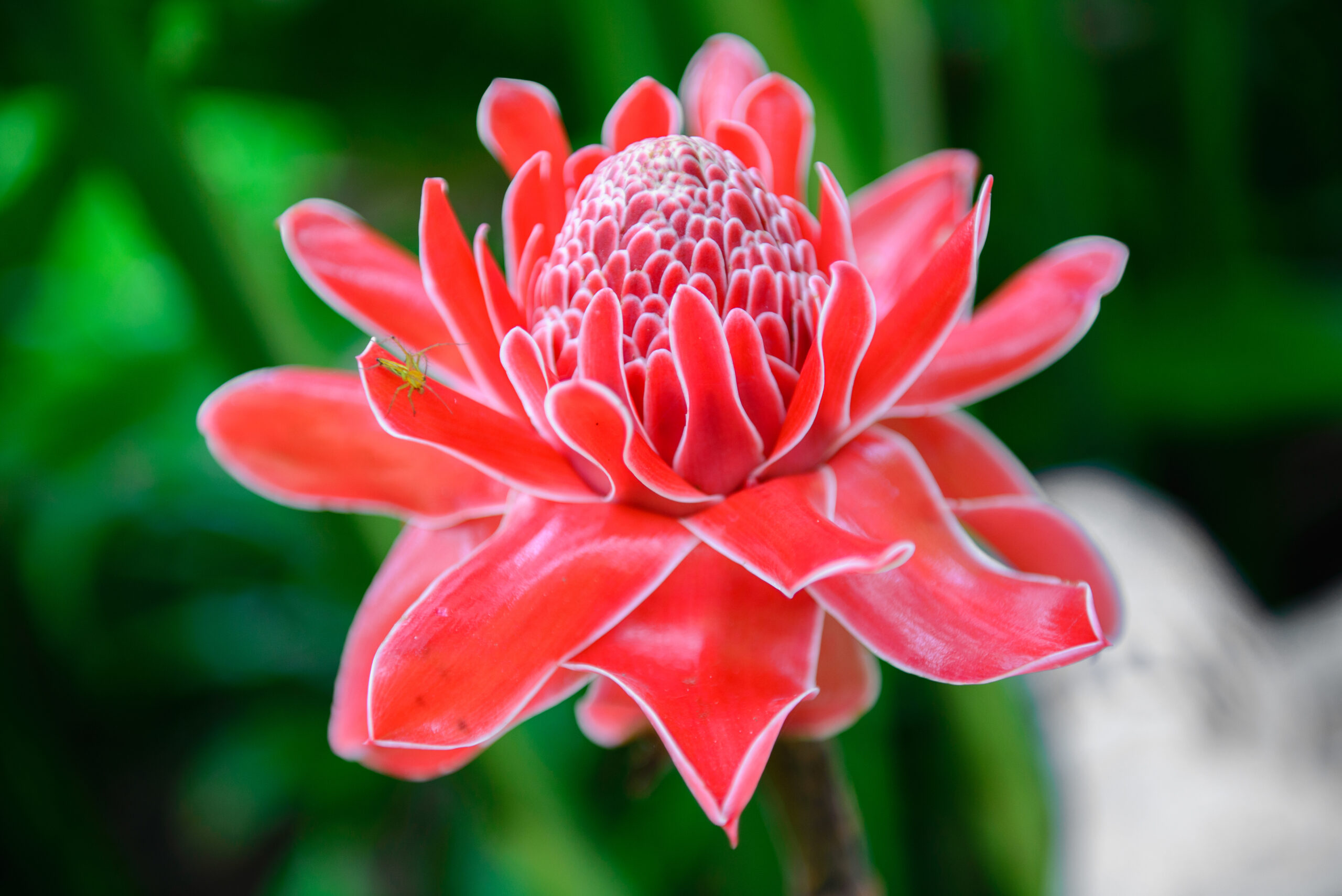
Torch Ginger is a stunning tropical flower that stands tall with a fiery red bloom. Native to Southeast Asia, it can be found in tropical gardens around the world. The flower grows on a long stalk, reaching heights of up to 20 feet. Its bright red, waxy petals form a cone-like structure, resembling a torch. Torch Ginger blooms year-round in warm, humid environments. It is often used in landscaping and as an edible garnish in Asian cuisine. Its showy, dramatic appearance makes it a favorite for exotic garden displays.
Bougainvillea (Bougainvillea spp.)
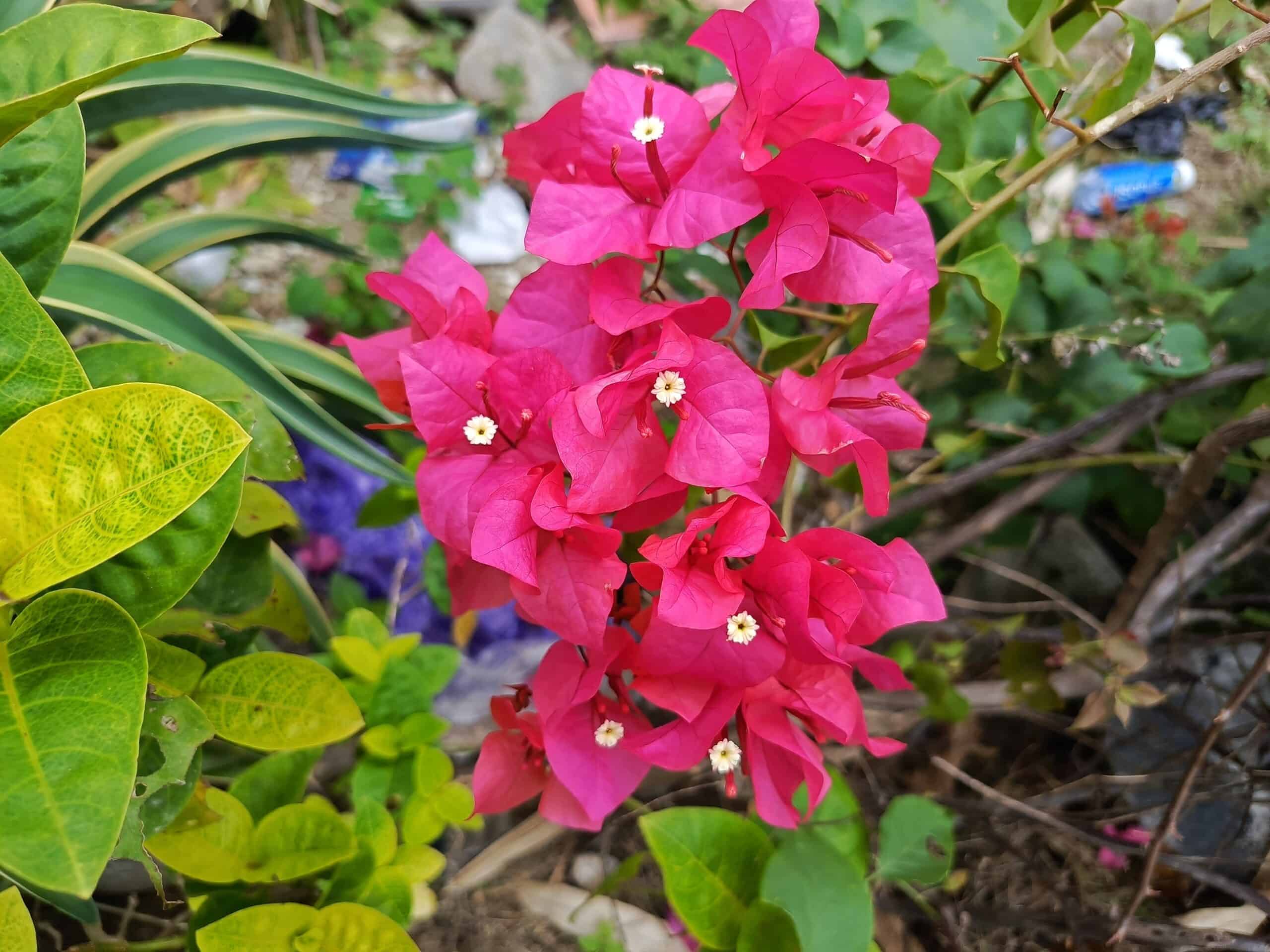
Bougainvillea is a hardy, climbing plant that produces vibrant blooms in tropical and subtropical climates. Originating from South America, it can be found across Asia, the Mediterranean, and even parts of the United States. Its colorful bracts, often mistaken for flowers, range in shades from pink to purple, red, and white. Bougainvillea thrives in sunny, dry environments and can tolerate poor soils. It is widely used as an ornamental plant for fences, walls, and trellises. This plant is highly adaptable and blooms throughout the year, adding color to landscapes across the globe.
Amaryllis (Hippeastrum spp.)
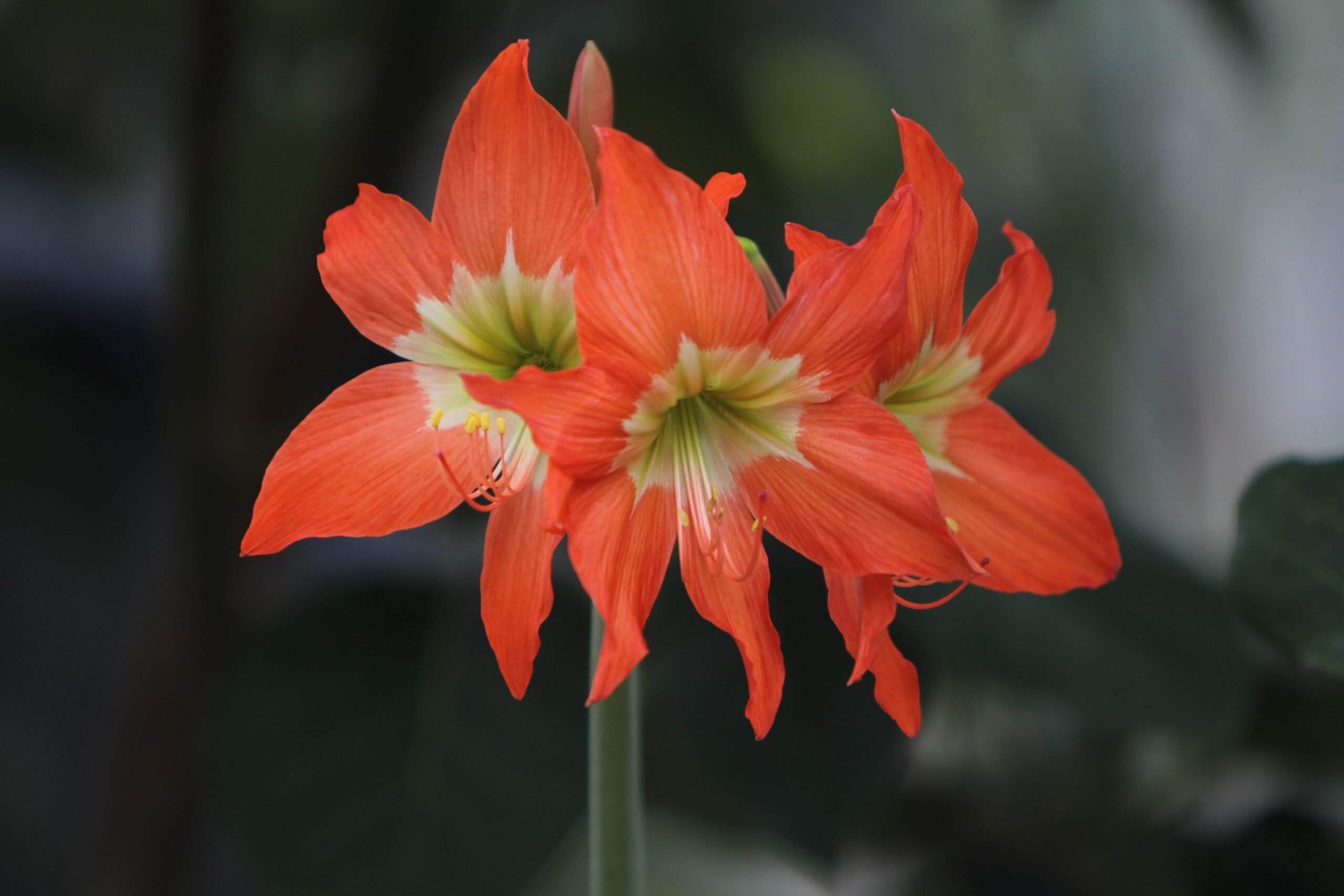
Amaryllis is known for its large, trumpet-shaped flowers that bloom in brilliant colors. Originally from South America, it is now grown in gardens worldwide, particularly in temperate and tropical regions. The flowers come in shades of red, pink, white, and orange. Amaryllis blooms during late winter or early spring, adding brightness to gardens during colder months. It is often grown indoors as a potted plant due to its ease of care. With its bold and long-lasting blooms, Amaryllis is a favorite for holiday decor and festive displays.
Heliconia (Heliconia spp.)
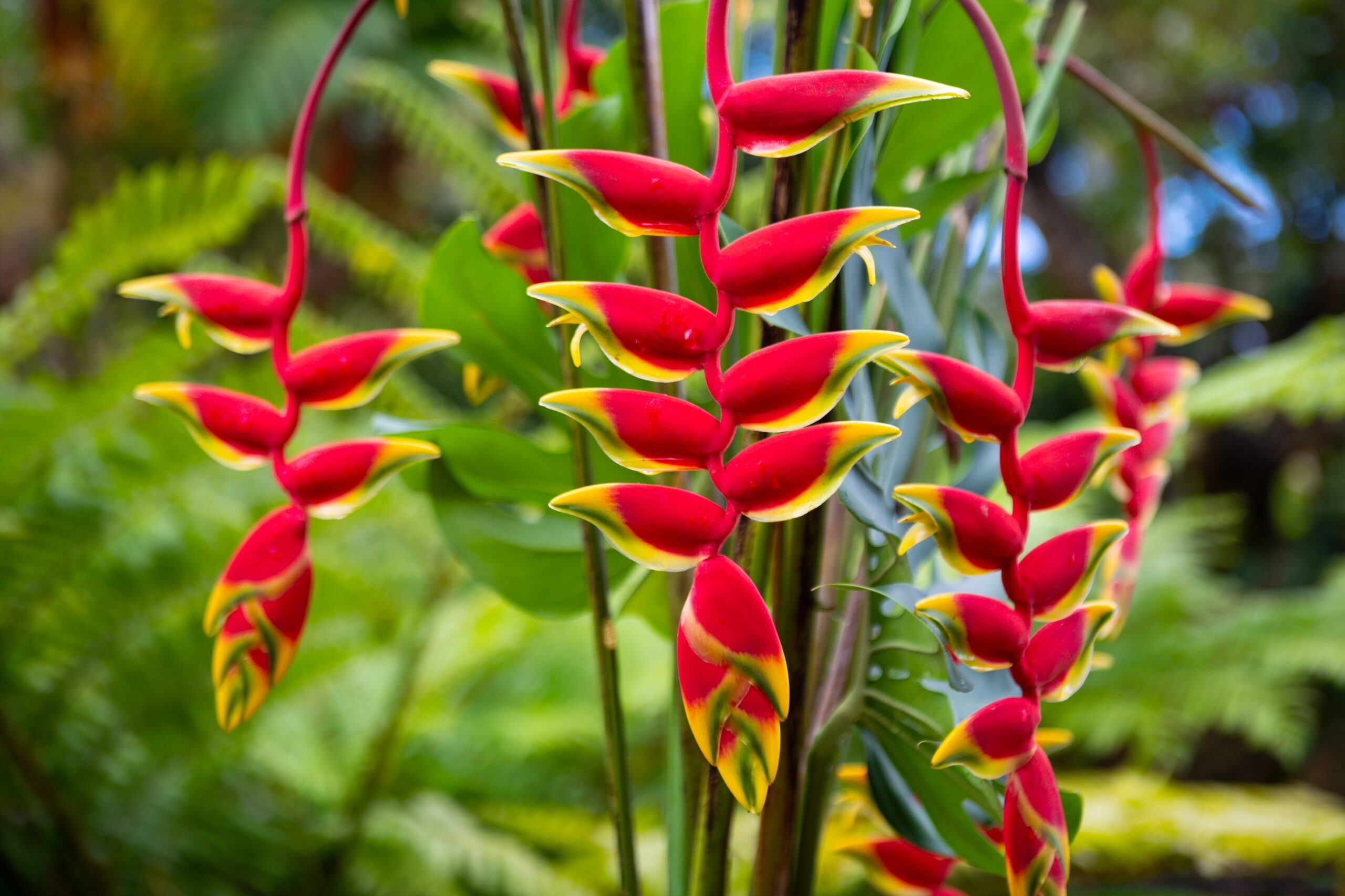
Heliconias are known for their bright, waxy bracts that come in vibrant reds, oranges, and yellows. Native to tropical regions, they are often found in rainforests but are grown in gardens worldwide. The plant’s long, sturdy stalks can reach several feet in height. Heliconias attract hummingbirds, which play a key role in their pollination. The flower bracts resemble lobster claws or parrot beaks, adding a unique tropical touch. They thrive in warm, humid climates with plenty of water. Heliconias are popular in landscaping due to their striking appearance and easy maintenance.
Arabian Jasmine (Jasminum sambac)
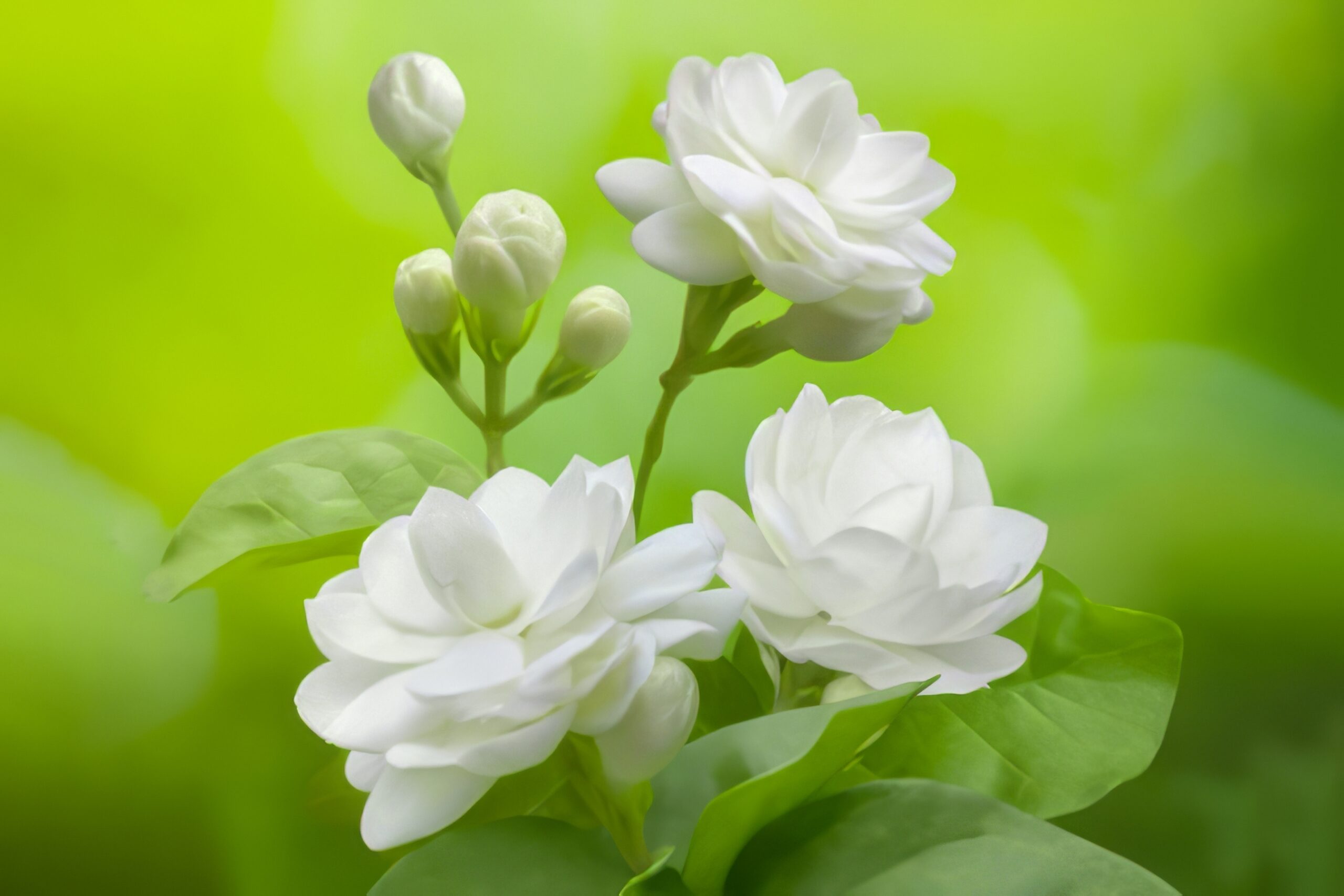
Arabian Jasmine is a small, fragrant flower that blooms in warm regions around the world. Its white petals are delicate, and the flowers bloom year-round in tropical and subtropical climates. This plant is native to Southeast Asia but is now common in gardens across Asia, the Middle East, and even Mediterranean regions. The flowers are often used to make perfumes and garlands. Arabian Jasmine thrives in well-drained soil and full sunlight. Its sweet fragrance and simple beauty make it a favorite for both ornamental and cultural purposes.
Angel’s Trumpet (Brugmansia spp.)
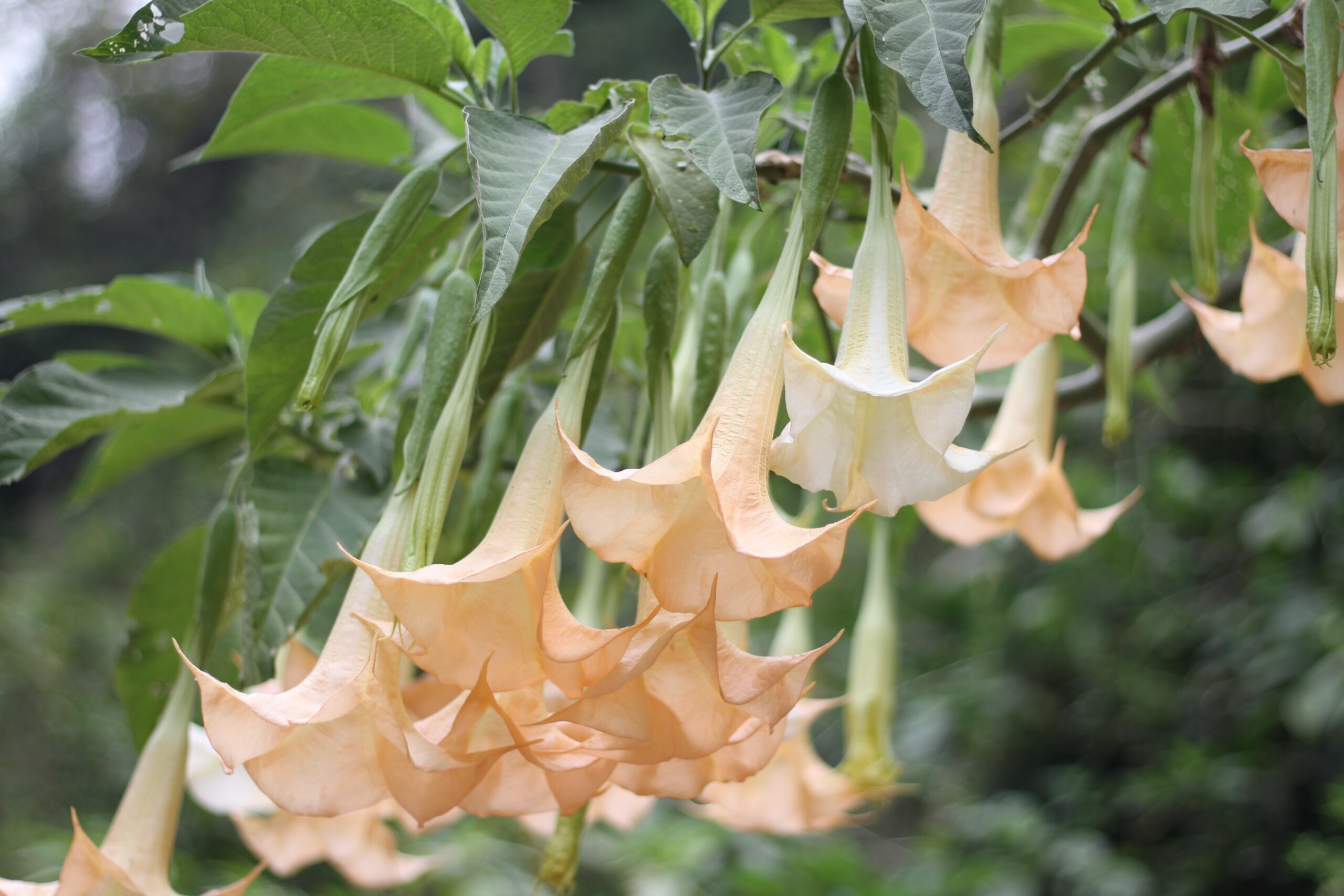
Angel’s Trumpet is a large, trumpet-shaped flower that hangs down gracefully from woody shrubs or trees. Native to South America, it blooms in warm regions globally, including parts of the United States and Europe. The flowers can be white, yellow, pink, or orange, releasing a sweet fragrance, especially at night. Angel’s Trumpet thrives in moist, well-drained soils and prefers partial shade. It is often grown in gardens for its dramatic appearance. While beautiful, it is important to note that all parts of this plant are toxic if ingested.
Plumeria (Plumeria spp.)
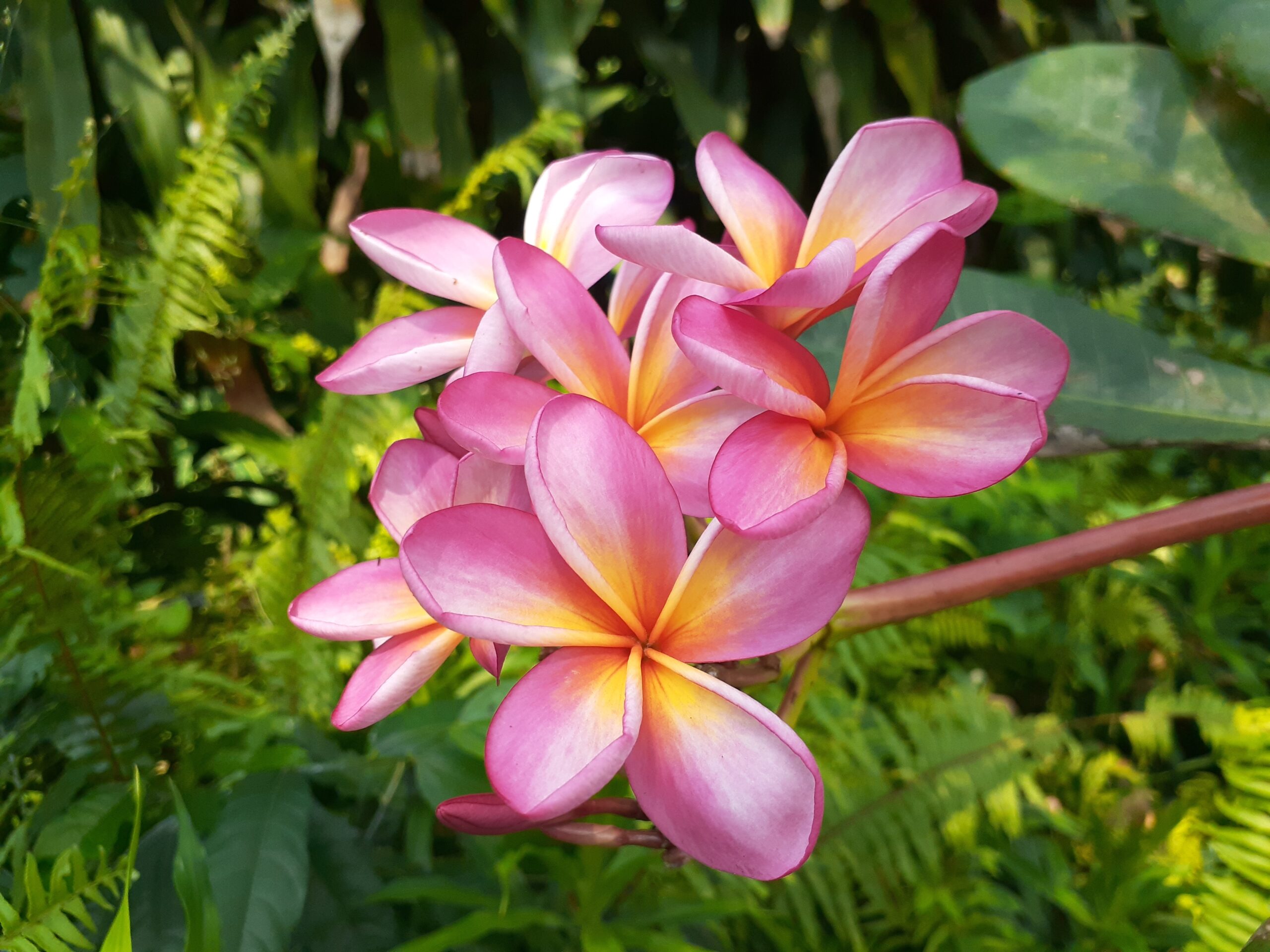
Plumeria, also known as frangipani, is a tropical flower with soft, velvety petals in vibrant shades of pink, yellow, or white. Native to Central America, it has spread to tropical and subtropical regions worldwide. The flowers bloom throughout the year, especially in warmer months. Plumeria is often used in leis and floral arrangements for its pleasant fragrance and beauty. It grows as a small tree or shrub, thriving in well-drained soil and sunny conditions. Its striking flowers and sweet scent make it a popular choice in gardens and cultural ceremonies.
African Violet (Saintpaulia spp.)
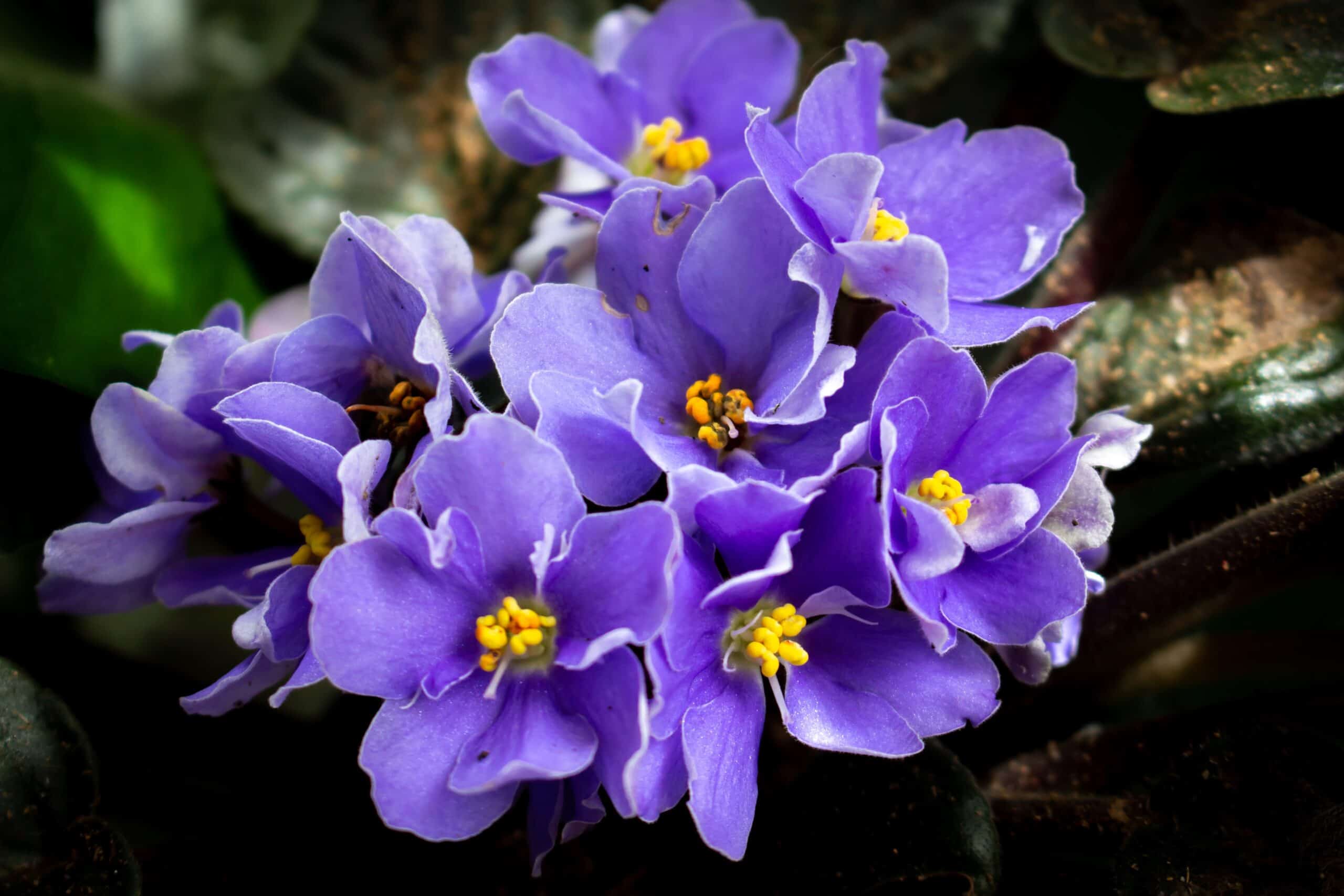
African Violets are small, charming flowers that bloom in shades of purple, pink, and white. Native to East Africa, they are now grown worldwide as houseplants. The plant has fuzzy leaves and produces clusters of delicate blooms. African Violets thrive indoors with moderate light and warm temperatures. They are easy to care for, making them popular among novice gardeners. Their ability to flower year-round, with proper care, makes them a favorite for indoor spaces. These flowers add a touch of nature to homes and offices across the globe.
Orchids (Orchidaceae family)
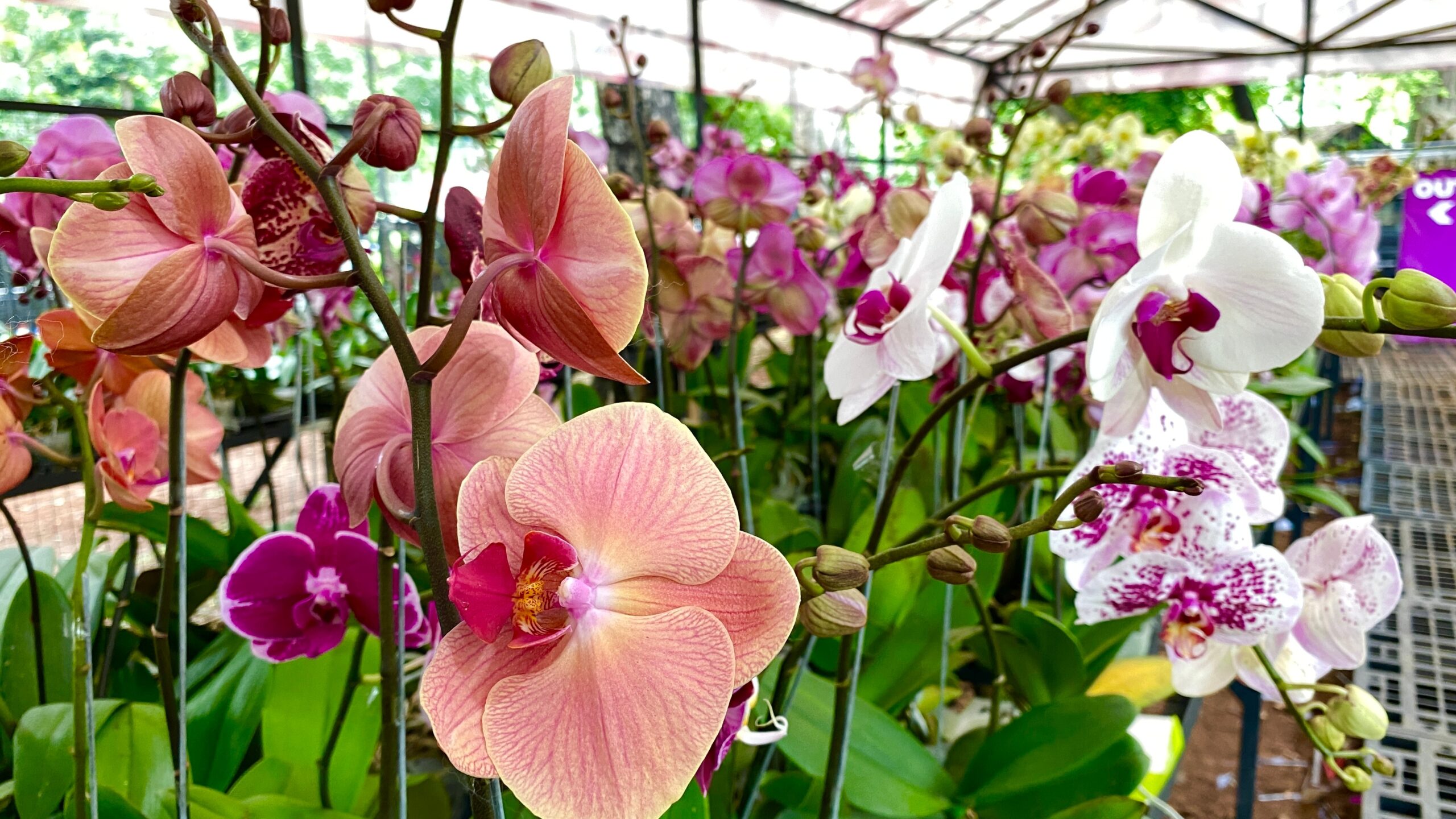
Orchids are among the most diverse and exotic flowers in the world. They can be found in almost every region, from tropical rainforests to colder climates. Orchids are known for their intricate, symmetrical blooms and come in a wide range of colors. These flowers often grow on other plants, making them epiphytes. Orchids thrive in well-drained, humid environments with indirect light. They are highly valued for their beauty, making them popular in both gardens and floral arrangements. With thousands of species, orchids are a symbol of elegance and rarity.
Hibiscus (Hibiscus rosa-sinensis)
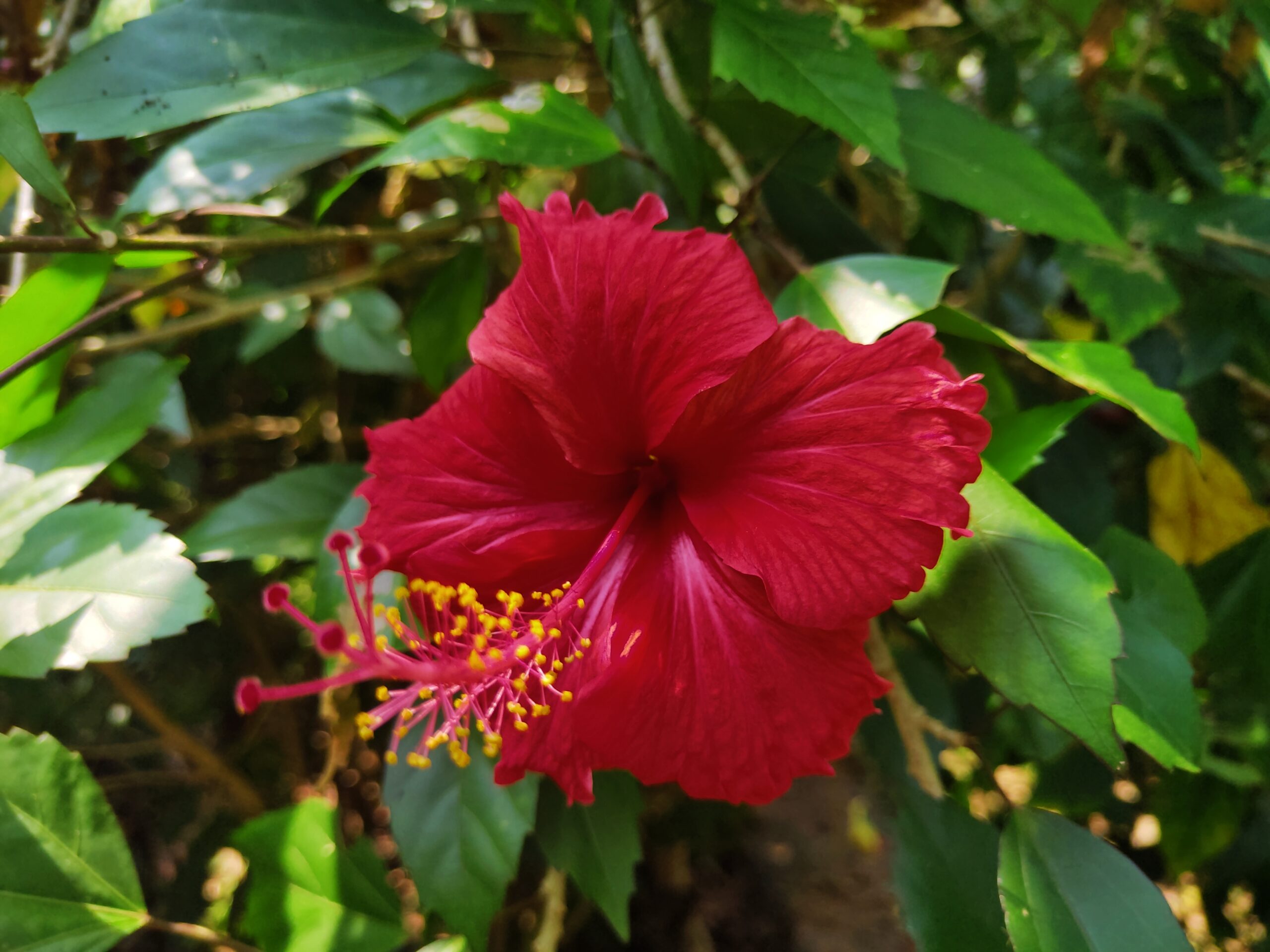
Hibiscus is a bold, tropical flower known for its large, colorful blooms. Native to Asia, it now grows in warm climates worldwide, including the Caribbean and parts of the United States. The flowers are typically red, pink, yellow, or white, with a prominent central stamen. Hibiscus blooms year-round in tropical climates, adding vibrant color to gardens and landscapes. It thrives in full sun and well-drained soil, making it easy to grow in many regions. Beyond its beauty, hibiscus is used to make herbal teas and is a symbol of hospitality in many cultures.
This article originally appeared on Rarest.org.
More from Rarest.org
12 Classic Cars Abandoned in Barns Now Worth Millions

Classic cars often carry a unique charm, but some of the most iconic ones have been left abandoned in barns, forgotten for decades. Read More.
16 Rare Craters on Earth That Look Like They’re From Another Planet

Earth is home to craters that seem otherworldly in their beauty and scale. Read More.
20 Exotic Birds in Danger of Disappearing from Our World

Exotic birds are among the most vibrant and unique species on our planet. However, many of these stunning creatures are at risk of vanishing forever. Read More.
